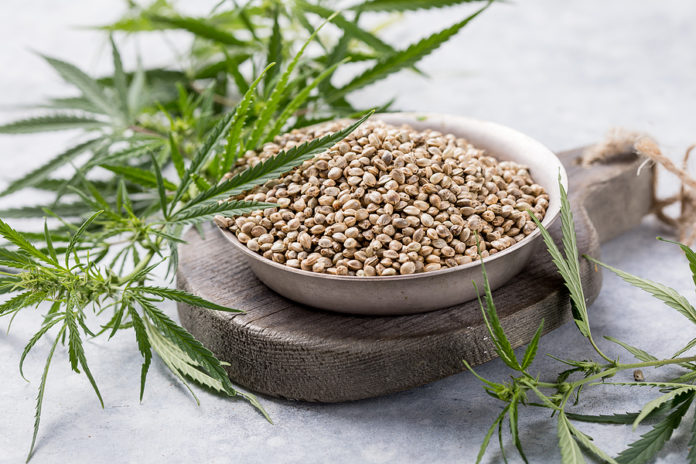
If federal regulation is implemented by 2024, the CBD market is expected to hit $11 billion by 2027, according to Brightfield Group’s report CBD: FDA Impact & the Path Forward. Without regulation, the market will be closer to $7 billion.
The pandemic has driven a sizable increase in interest in CBD. Morning Consult’s latest State of Food and Beverage report found that 1 in 3 U.S. adults have tried CBD products, up from 1 in 4 in 2019. While CBD usage has increased for all generations, the biggest jump has been among Millennials – 49% now report having tried a product with CBD in it, up from 32% just three years ago.
The main reason for the increase is consumers’ desire for products that support wellness. “CBD fits neatly into the wider food and beverage wellness trend,” said Matt Zehner, senior insights analyst at Brightfield Group. “Consumers report that CBD offers a number of benefits ranging from aiding relaxation to relieving physical pain and promoting sleep, all traits which are desired by the public at large.”
Zehner also noted that CBD consumers are more likely than average consumers to be interested in other functional ingredients, and that “CBD companies have demonstrated that CBD can be combined with other wellness ingredients such as adaptogens to create products that offer a wide array of benefits and target specific consumer segments.” For example, CBD gummies are a popular way to take vitamins, while CBD beverages are most commonly used for relaxation.
While topicals and tinctures make up the majority of the CBD products sold in grocery, Brightfield Group forecasts that ingestible products are poised for major growth pending a federal regulatory framework.
“There is significant opportunity for growth across all CBD-infused food and beverage categories, though the category continues to be held back in the near term by a lack of FDA guidance allowing for CBD to be sold as a food additive and dietary supplement,” Zehner said. “With increased regulatory clarity, we forecast that CBD food and beverage products are set to experience growth that significantly outpaces the overall market, with non-gummy edibles leading the pack with a 30% compound annual growth rate from 2022-2027, closely followed by drinks with 28%. Within all categories there remains room for innovation, in terms of ingredients, branding, and flavor, to appeal to novel consumer groups and increase customer loyalty.”
In terms of what types of food and beverage products consumers want, data from Evergi, Brightfield’s National Wellness Survey Platform, shows that consumers are most interested in beverages such as infused teas, sodas, and sparkling waters, while non-gummy edibles like baked goods “remain more niche.”
Whether or not federal regulation will be implemented by 2024, it will be coming at some point, and the best thing companies can do is be prepared. Zehner recommends that food and beverage companies take several steps to succeed in a more tightly regulated market.
“Firstly, having high testing standards and ensuring that products are created with high-quality ingredients and hemp that is free of any potentially harmful substances will be important to receive placement in major retailers,” he said. “In the interim period, partnering with less risk averse retailers or those operating in states with CBD regulatory schemes such as California can provide experience in the retail landscape and help to demonstrate the success of a brand’s products at shelf. Finally, ensuring that [the] company’s goods align with consumer needs and are appealing in terms of both flavor and form will be key to seeing sell-through both before and after increased regulation.”








